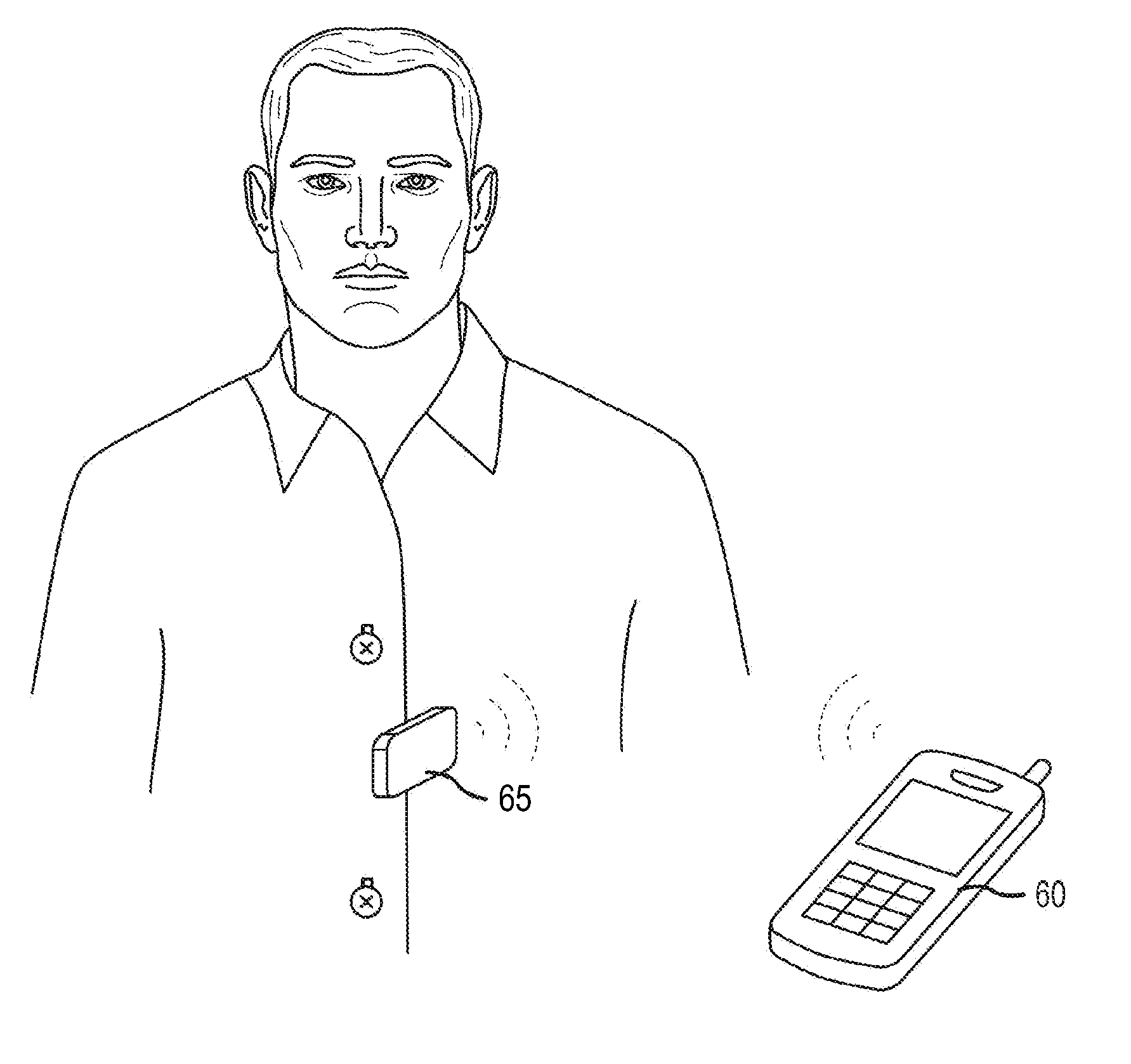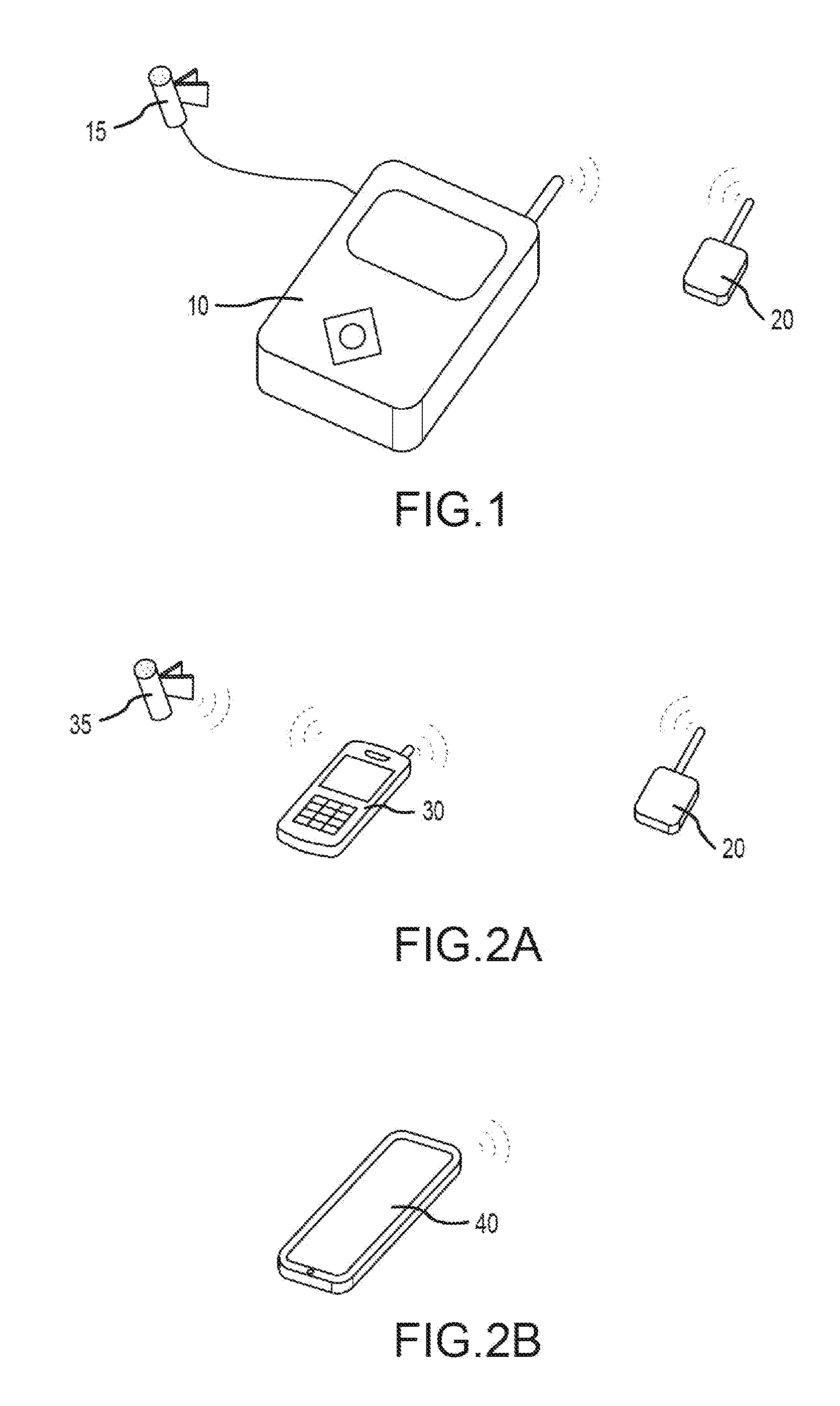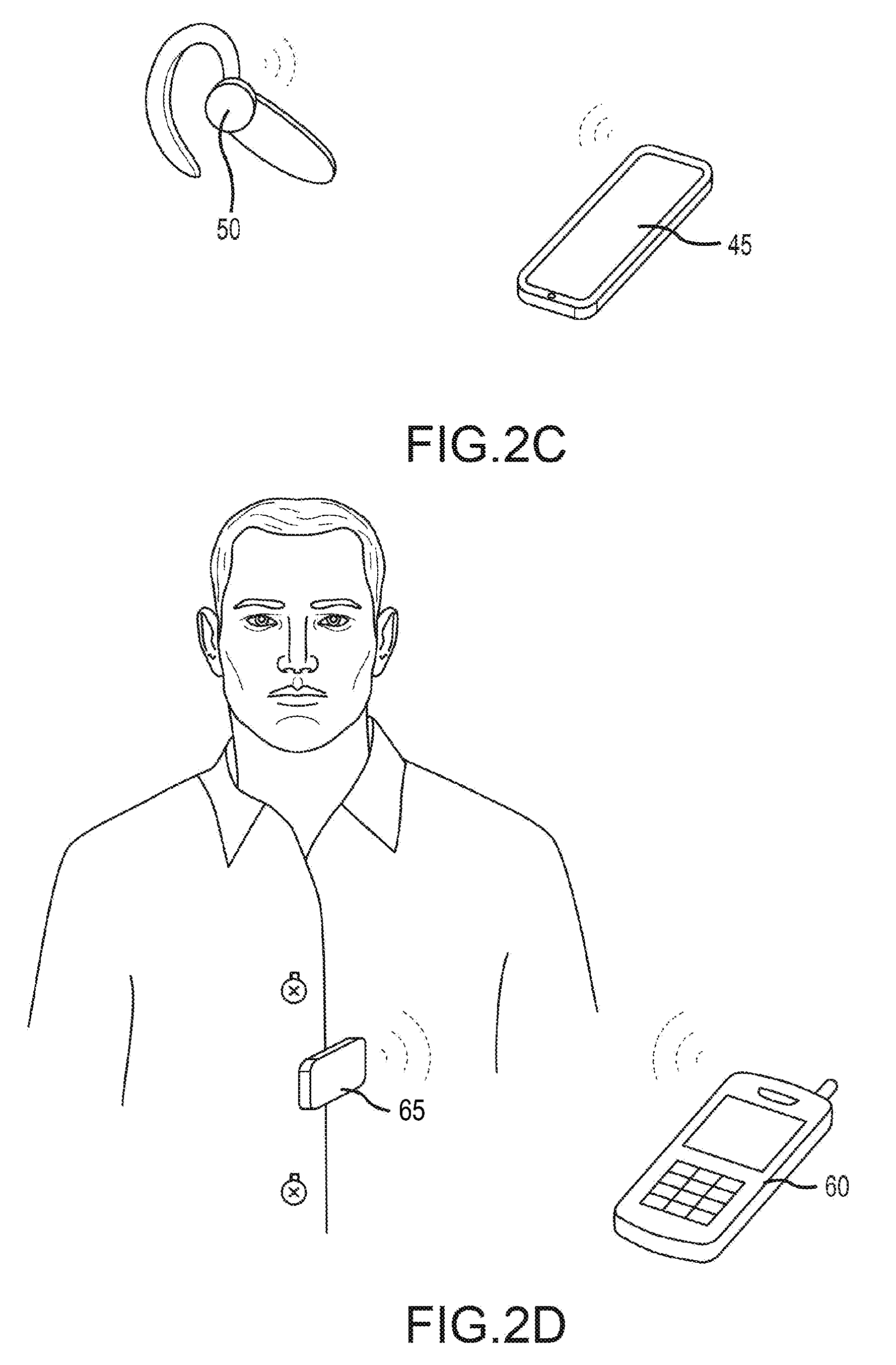Respiratory disease monitoring system
- Summary
- Abstract
- Description
- Claims
- Application Information
AI Technical Summary
Benefits of technology
Problems solved by technology
Method used
Image
Examples
Embodiment Construction
[0045]The technical underpinnings of the proposed project are well established. Various embodiments employ a combination of off-the-shelf commercial electronic hardware and custom hardware and software. The sound data analysis techniques are well established. The novelty of the proposed project is at least two-fold. One novel feature is that the system employs multi-modal monitoring of an individual, specifically the identification of wheezing and cough from their breath sounds and measuring the level of the patient's motion and activity. Analyzing these attributes together (wheezing and cough and activity) provides a more comprehensive and greater insight into the levels of asthma control of a patient than monitoring of a single parameter (e.g., wheezes) allows. Asthma symptoms manifested as a result of vigorous activity can be differentiated from those occurring independent of physical activity changes. This system can also monitor the attributes of wheezing and cough during sleep...
PUM
 Login to View More
Login to View More Abstract
Description
Claims
Application Information
 Login to View More
Login to View More - R&D
- Intellectual Property
- Life Sciences
- Materials
- Tech Scout
- Unparalleled Data Quality
- Higher Quality Content
- 60% Fewer Hallucinations
Browse by: Latest US Patents, China's latest patents, Technical Efficacy Thesaurus, Application Domain, Technology Topic, Popular Technical Reports.
© 2025 PatSnap. All rights reserved.Legal|Privacy policy|Modern Slavery Act Transparency Statement|Sitemap|About US| Contact US: help@patsnap.com



